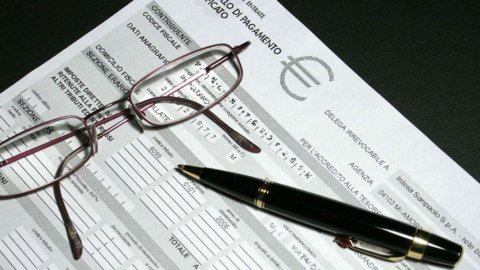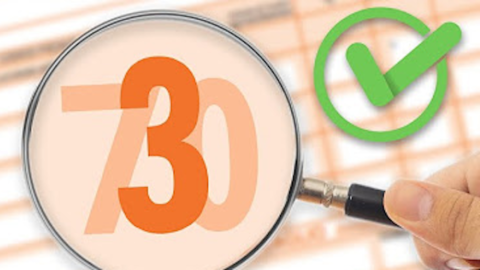Between Christmas and New Year's Eve there is another box to be circled in red on the calendar: 29 December, the last day to pay the VAT advance for the last period of 2014 (month or quarter). The deadline closes the series of major year-end tax appointments and affects the majority of VAT payers, but not the professionals who started their business during the year.
1. WHO HAS TO PAY?
In detail, the categories required to pay are the following (the source of the list is the Revenue Agency):
– Artisan entrepreneurs and traders, agents and trade representatives.
– Self-employed workers, VAT-registered professionals registered or not registered in professional registers.
– Partnerships, simple partnerships, Snc, Sas, associated firms.
– Corporations and commercial entities, SpA, Srl, cooperative companies, Sapa, public and private entities other than companies.
– Credit institutions, SIMs, other financial intermediaries, trust companies.
2. WHO IS EXEMPT?
Even more substantial is the list of those who are exempt from payment:
– VAT payers who are not required to make periodic monthly or quarterly payments (for example exempt farmers and those who have joined the regime for new production initiatives).
– Territorial public entities that carry out relevant activities for VAT purposes (for example the Municipalities that manage the supply of water, gas, electricity and steam).
– Subjects who do not have one of the two data (the "historical" or the "forecast") on which the calculation is based (for example those who ceased activity by 30 November if monthly or by 30 September if quarterly, or have started operations).
– Taxpayers for whom there is an amount due as an advance not exceeding 103,29 euros.
– Taxpayers who, during the tax period, carried out only non-taxable, exempt, non-taxable transactions or, in any case, without the obligation to pay the tax.
– Agricultural producers.
– Subjects who carry out show and game activities under a special regime.
– Amateur sports associations, non-profit associations and pro loco associations, on a flat-rate basis.
– The collectors and dealers of scrap, waste, waste paper, glass and the like, exempt from the obligations of liquidation and payment of the tax.
– Individual entrepreneurs who have rented out the only company, by 30 September if paying quarterly taxpayers, or by 30 November if paying monthly taxpayers, provided that they do not carry out other activities subject to VAT.
– Taxpayers who adopt the minimum regime.
3. HOW IS IT CALCULATED?
There are three methods of calculation and taxpayers have the right to choose the one that most reduces their debt (even up to zeroing it).
3.1 Historical method
The 2014 advance VAT is equal to 88% of the payment made, or which should have been made, for the corresponding period of 2013 (gross of the advance due for the previous year). The calculation basis on which to apply the 88% is equal to the resulting tax liability:
– from the liquidation relating to the month of December 2013 for monthly tax payers;
– from the annual VAT return or from the single form for ordinary quarterly tax payers;
– from the liquidation of the fourth quarter of 2013 for special quarterly taxpayers (hauliers, fuel distributors, water, gas, electricity supply companies, etc.).
3.2 Forecast method
In this case, the deposit is equal to 88% of the VAT that is expected to be paid:
– for the month of December 2014, in the case of monthly tax payers;
– in the annual VAT or Unico declaration, in the case of ordinary quarterly tax payers;
– for the fourth quarter of 2014, if it concerns special quarterly payers.
The forecast must be net of any deductible excess carried over from the previous month or quarter. Choosing this method, in any case, involves a risk: whoever pays less than due will have to pay a penalty for omitted or insufficient payment.
3.3 Analytical model
The last possible method provides for the payment of 100% of the difference between the VAT on active transactions and the VAT on purchases for the period 1-20 December 2014 (monthly subjects) or 20 October-2014 December 20 (quarterly subjects) . It is necessary to include in the calculations the VAT on invoices recorded on 20 December, the VAT on transactions carried out on 20 December but not yet registered or invoiced and the VAT on purchases recorded on XNUMX December.
4. HOW TO PAY?
Payment must be made with the electronic F24 form, on which one of the two tax codes established by the tax authorities must be indicated:
– monthly taxpayers: 6013;
– quarterly tax payers: 6035.
It is possible to offset the advance amount with any tax credits. Furthermore, unlike the provisions for periodic payments, ordinary quarterly taxpayers do not have to apply the 1% interest increase. Lastly, the down payment must be subtracted from the VAT to be paid for December (for monthly taxpayers), at the time of the annual VAT return (for quarterly taxpayers) or from the amount due for the liquidation of the fourth quarter (for taxpayers special quarterly).
5. SPECIAL CASES
Anyone who has changed regime between last year and this year and intends to carry out the calculation with the historical method must bear in mind two rules:
1. For the transition from monthly to quarterly scheme the 2014 advance must be calculated with reference to the payments made in the last three months of 2013.
2. Conversely, for the transition from quarterly regime to monthly regime the 2014 advance must be calculated on one third of the tax paid for the fourth quarter of 2013.
Finally, taxpayers with separate accounts must calculate the amount attributable to each activity carried out separately and make separate payments: the VAT advance, therefore, must be calculated by adding up the data relating to each activity, thus offsetting the amounts owed with those owed. credit.





